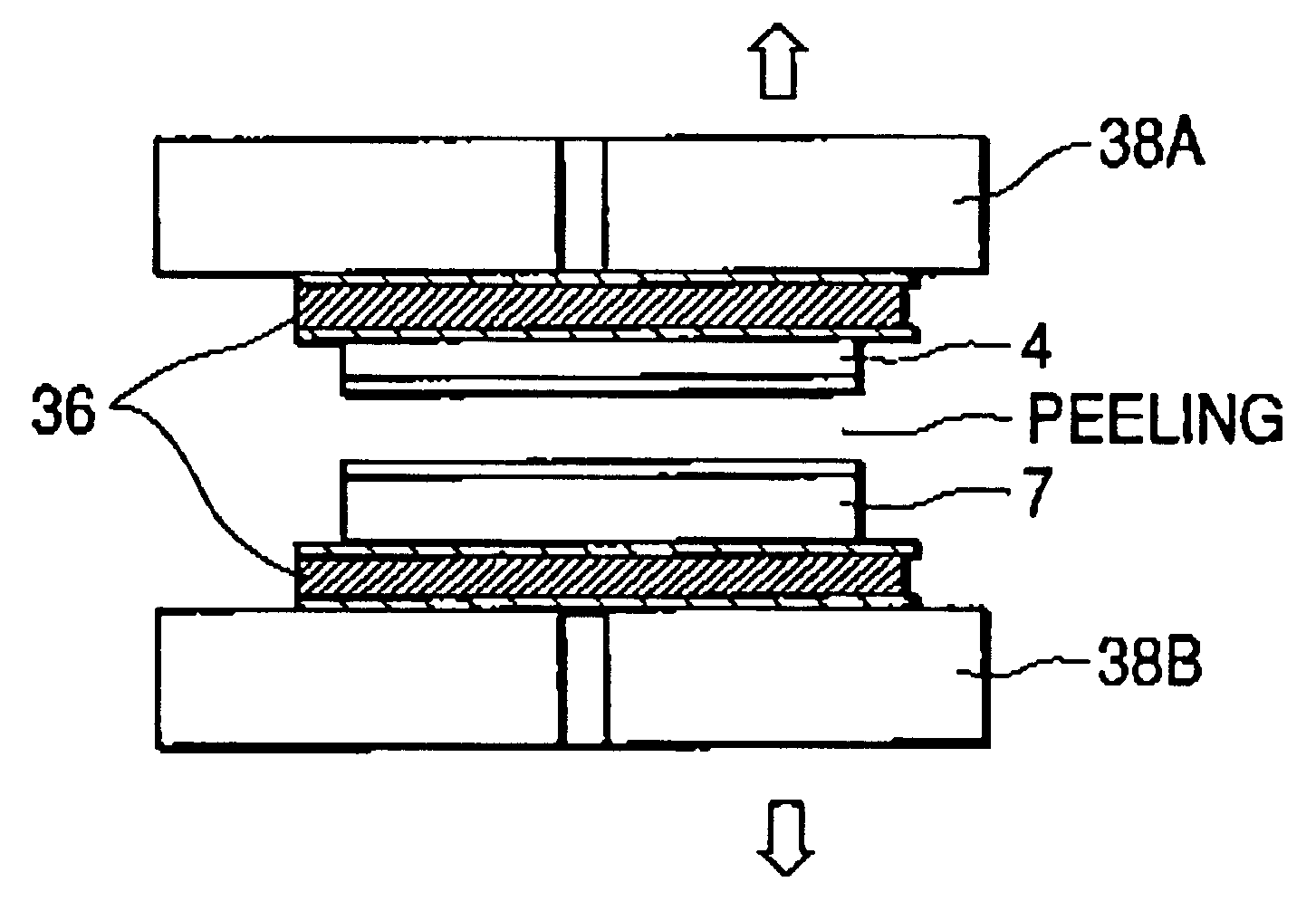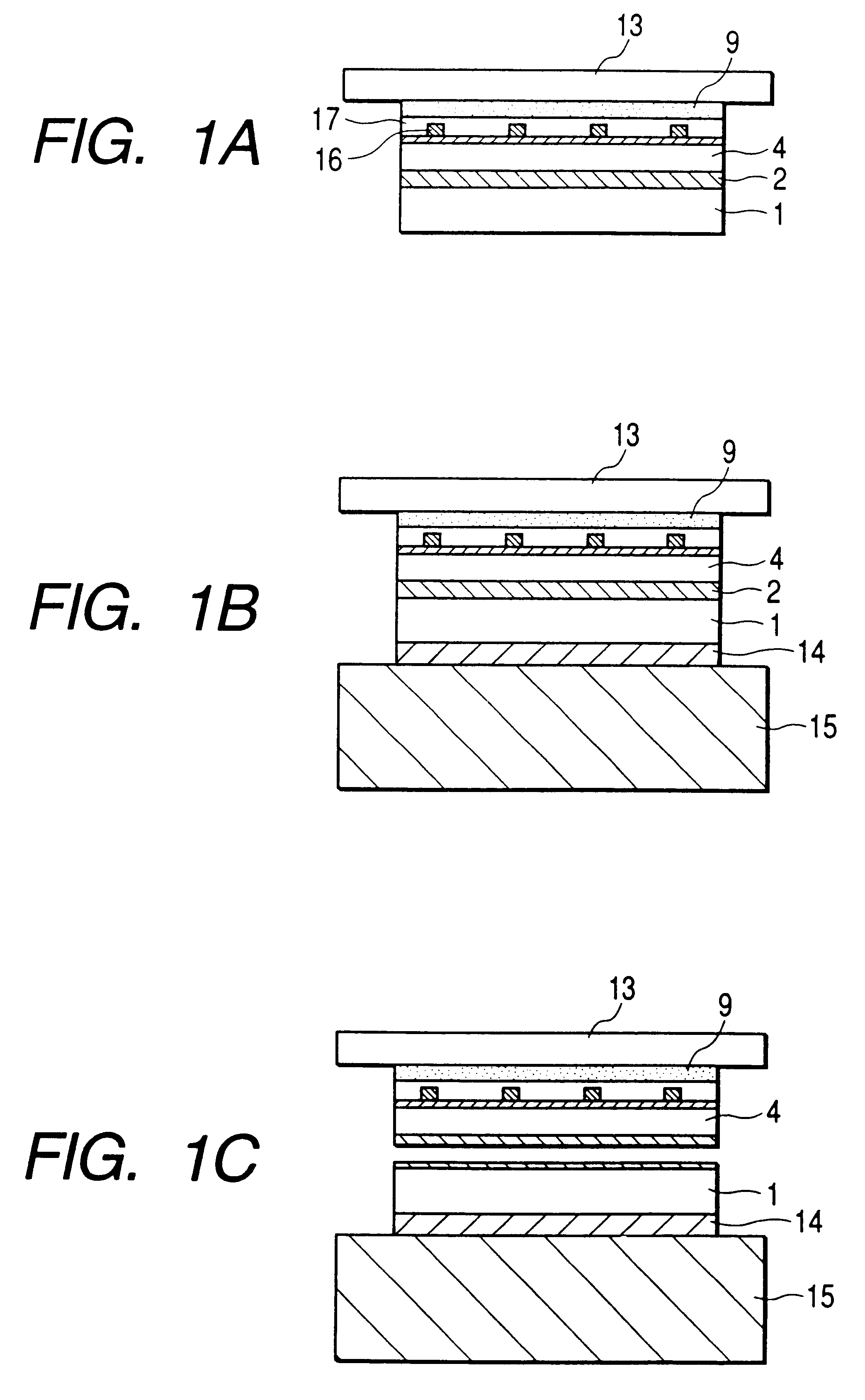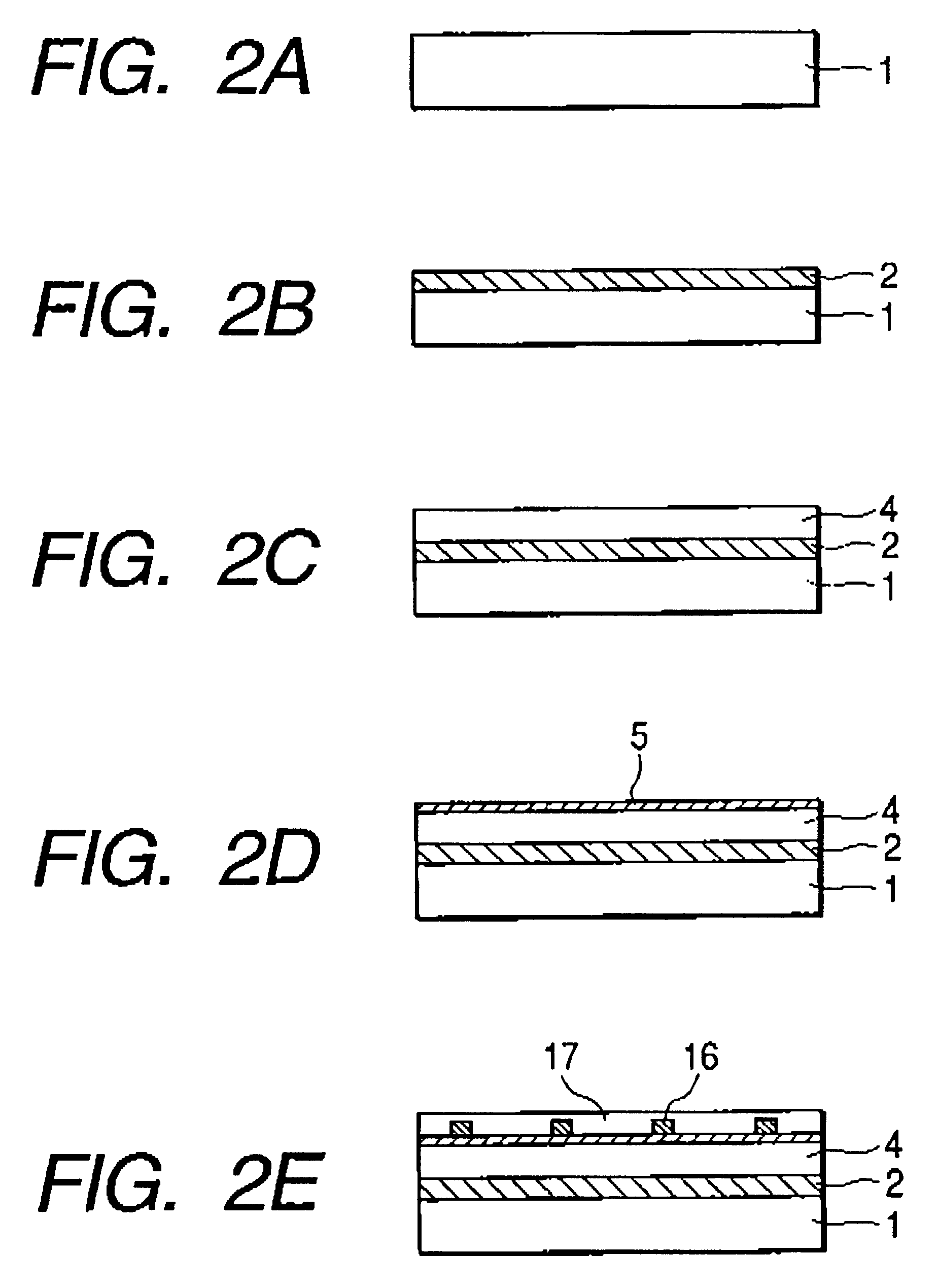Separation method of semiconductor layer and production method of solar cell
a production method and technology of solar cells, applied in the field of separation of semiconductor layers and production methods of solar cells, can solve the problems of difficult to completely remove adhesives, chipping and cracking of wafers, and polluting the global environmen
- Summary
- Abstract
- Description
- Claims
- Application Information
AI Technical Summary
Problems solved by technology
Method used
Image
Examples
embodiment 1
Embodiment 1 will be described the production steps of a solar cell, which is obtained by forming a porous Si layer on a Si wafer by anodization; depositing single-crystal Si layers on the porous Si layer by an apparatus for liquid-phase growth; forming grid electrodes; and peeling off the single-crystal Si layers, and which has a structure that the single-crystal Si layers of the solar cell produced are irradiated with light from the surface side on which the epitaxial growth of the Si layer is stopped (grid electrode side).
FIGS. 1A to 1C through 3A to 3C show the schematic sections illustrating the production steps of the production method of a thin-film single-crystal Si solar cell according to Embodiment 1 of the present invention. First, the Si wafer 1 is prepared (FIG. 2A). Then, the Si wafer 1 is anodized to form the porous Si layer 2 thereon (FIG. 2B). FIGS. 18A and 18B show the sections illustrating apparatuses for anodizing the Si wafer 1 in a hydrofluoric acid-based etcha...
embodiment 2
Embodiment 2 will be described the production steps of a solar cell, the solar cell produced being irradiated with light from the single-crystal Si layer on the surface side on which the epitaxial growth of the Si layer is stopped (grid electrode side). FIGS. 4A to 4F through 5A to 5E show the schematic sections illustrating the production steps of Embodiment 2.
The p.sup.+ type Si wafer 1 (FIG. 4A) was anodized with a solution obtained by adding isopropyl alcohol to hydrofluoric acid at 1 / 10 vol. % to form a 5 .mu.m thick porous Si layer 2 (FIG. 4B) thereon. The Si wafer 1 was set in the load lock chamber in the apparatus for liquid-phase growth. The load lock chamber was evacuated under a vacuum and filled with a hydrogen gas. Then, the gate valve leading to the growth chamber was opened, to transport the substrate into the growth chamber. It was annealed at about 1050.degree. C., cooled to 950.degree. C., and dipped in the indium solvent supersaturated beforehand with Si. The solv...
embodiment 3
Embodiment 3 will be described production of a solar cell module with 3 solar cells (unit cell) connected in series, for which the production method of a solar cell of Embodiment 2 is efficiently used. FIGS. 6A to 6C through 9 illustrate production steps for a solar cell module of Embodiment 3, FIG. 6A showing a schematic plan and the others schematic sectional views.
In Embodiment 3, openings were provided on a part of the grid electrode 16 in the step for forming the antireflection layer 17 (FIG. 4E for Embodiment 2). The electroconductive busbar 23 (e.g., nickel-plated copper tape) was adhered to the grid electrode 16 at the openings using an electroconductive adhesive (not shown), and sintered (FIG. 6A, and FIG. 6B as the sectional view thereof). Water was sprayed over the surface of the holding substrate 30A as the holding means kept at 5.degree. C., to form a thin water layer thereon. The 3 unit cells thus prepared, kept at 5.degree. C., were arranged on the holding substrate 3...
PUM
 Login to View More
Login to View More Abstract
Description
Claims
Application Information
 Login to View More
Login to View More - R&D
- Intellectual Property
- Life Sciences
- Materials
- Tech Scout
- Unparalleled Data Quality
- Higher Quality Content
- 60% Fewer Hallucinations
Browse by: Latest US Patents, China's latest patents, Technical Efficacy Thesaurus, Application Domain, Technology Topic, Popular Technical Reports.
© 2025 PatSnap. All rights reserved.Legal|Privacy policy|Modern Slavery Act Transparency Statement|Sitemap|About US| Contact US: help@patsnap.com



